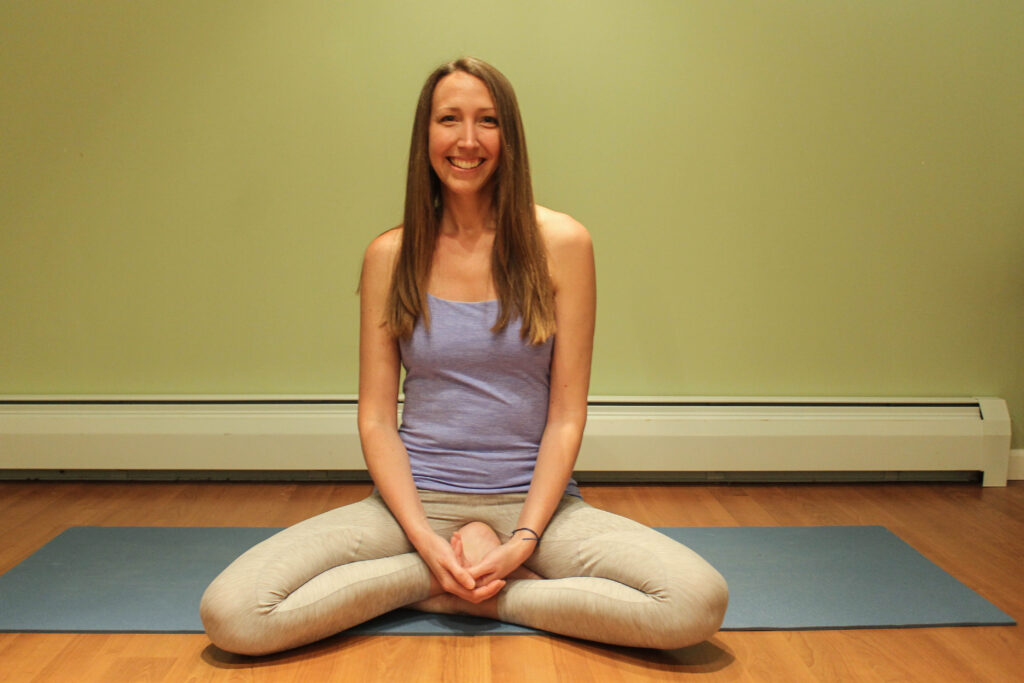Tell me if you resonate with one of the below:
“I’ll be happy when…..”
“I’ll be fulfilled when…..”
“I’ll know I’ve arrived when….” fill in the blank.
Likely our initial replies here are linked to an external measure or set of conditions such as financial status, job titles, sense of altruism, quality of relationships. While any of these measures may provide one with means or meaning in their life, santosha, or contentment, is something different.
My experience of santosha is that it is an enduring peace and abiding wholeness that is irrevocable and not contingent upon the aforementioned measures. This does not mean that you never experience hardship or displeasure. It does mean that you are held and fortified by an awareness of enduring peace in the face of temporary hardship and displeasure.

Santosha arises from clear seeing that grants you a view of what is passing and what is permanent. With such a view, you struggle less against reality as it is. You know that there are times that you will have more and times that you will have less. Times that you will be well and times that you will be unwell. Times that you will be happy and times that you will despair. Times that you will give and times that you will receive.
And perhaps more accurately, that you will experience all of these experiences along a spectrum across the duration of your life. With this acceptance of the changing nature of life, you are able to welcome life as it is.
I had a freakout moment once about santosha during a weekend of study with my teacher.
“If I’m always content, or always welcoming life as it is, how will I ever grow or impart change?”.
This led me to inquire into the nature of contentment and the nature of complacency. What came forth was
“Contentment without joy is complacency.”
Joy is an expansive quality. There is no stagnation in contentment. In santosha, we see the beauty underlying everything in the world. That recognition moves us to continuously align with that presence and uproot anything that distorts it.

To practice contentment:
–Listen to yourself. It is easy to feel dissatisfied if we are constantly tuned to something outside ourselves that lists all the ways in which we are not enough or do not have enough. It is easy to feel discontent if we are measuring ourselves against other people.
What do you truly desire and value? What is enough? Is there true certainty or stability in that measure?
–”But, but, but that running list you mentioned, it’s inside my head, too.” Yep. It might be the first thing that shows up when you sit with yourself in silence. Begin with noticing that.
How did those external influences become your inner voice and compass? You could think of the process of re-calibrating to innate knowing as climbing out of a trench. Sounds like work? It is. The trench represents these deeply ingrained grooves (patterns of thought and accumulations of impressions called samskaras). Each question, contemplation, insight, layer by layer, begins to fill in the groove. Gradually you reach higher ground. Standing at the edge of the trench, you can see that while you were immersed in it and its walls limited your view, it is not the totality of who you are. With this new vantage point comes the choice to step in a different direction and generate a new path, perhaps a path guided by what Pandit Rajmani Tigunait calls “the higher virtues of your heart.”.
–Keep a gratitude journal. Name and celebrate your blessings and simple pleasures. Take the time to include why you are grateful for these things.
–Invoke mudita. Delight in the joy and well-being of others.
–Try this affirmation: “This [loss of my inner peace and happiness] is a much greater loss than losing a portion of my material wealth. In worldly matters I will do what needs to be done, but never at the cost of losing the pristine nature of my mind. I must adhere to the higher virtues of my heart.” From commentary on Yoga Sūtra 2.33 by Pandit Rajmani Tiguniat.
Citation:
Tigunait, Rajmani. The Practice of the Yoga Sutra – Sadhana Pada. Honesdale, The Himalayan International Institute of Yoga Science and Philosophy. 2017.

Meghan Hogan, E-RYT 500, CCC-SLP is Lead Faculty for the Yoga Vidya Teacher Training and In-Depth Studies program, a Speech-Language Pathologist supporting preschool children with disabilities and their families, a wife and mother.
Her mission in sharing yoga is to provide caregivers of all walks of life tools for self-care and stress management.

